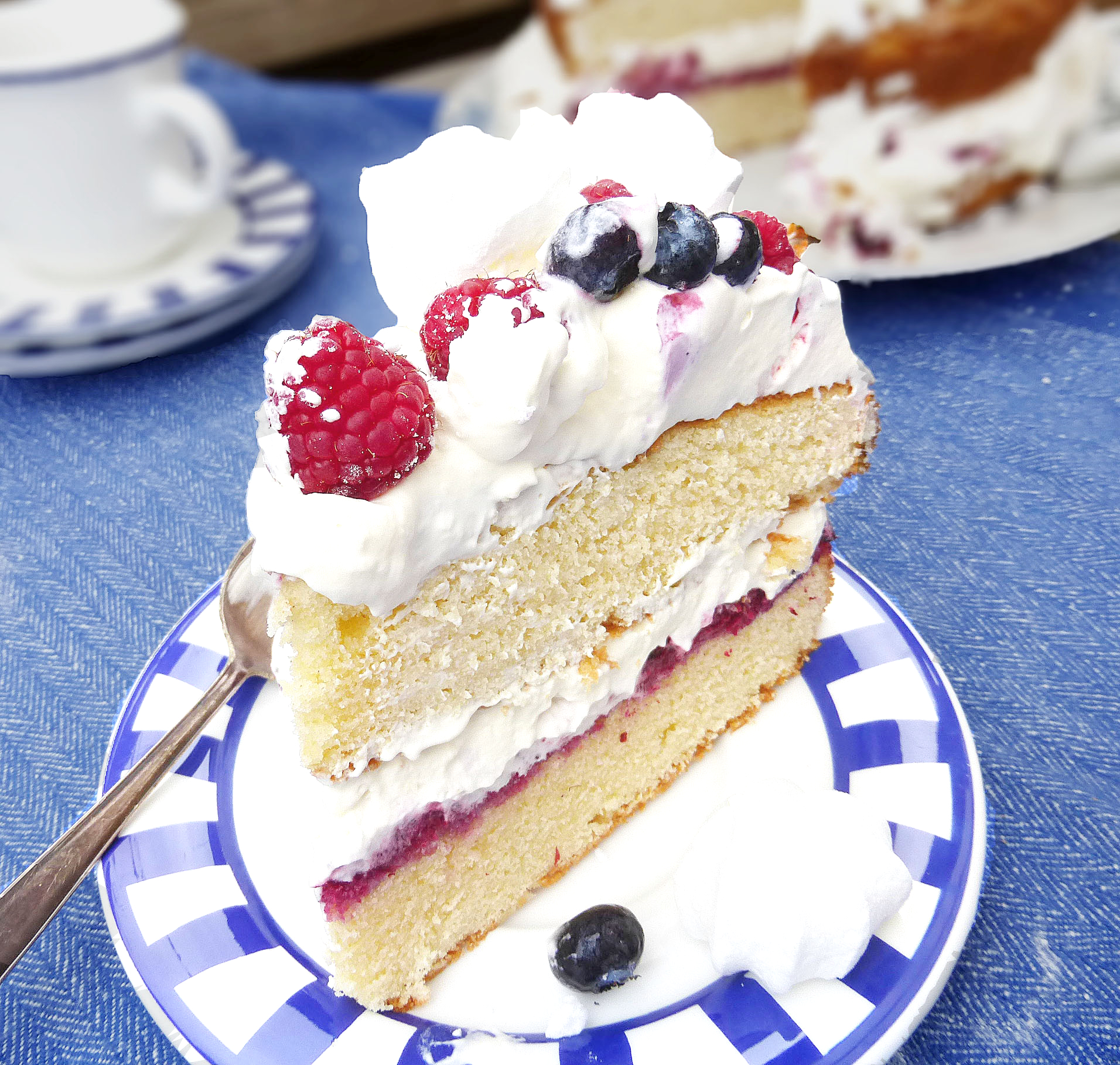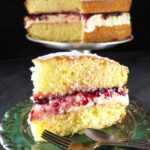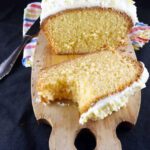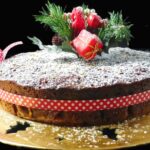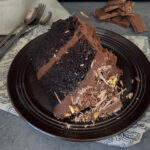Eton Mess Sponge Cake
This Eton Mess spelt sponge cake is a combo of two British classics: Eton Mess and a Victoria Sandwich layer cake. The light sponge combined with rich cream, fresh berries and meringue is beyond heavenly. The cake can be made with either all-purpose or spelt flour.
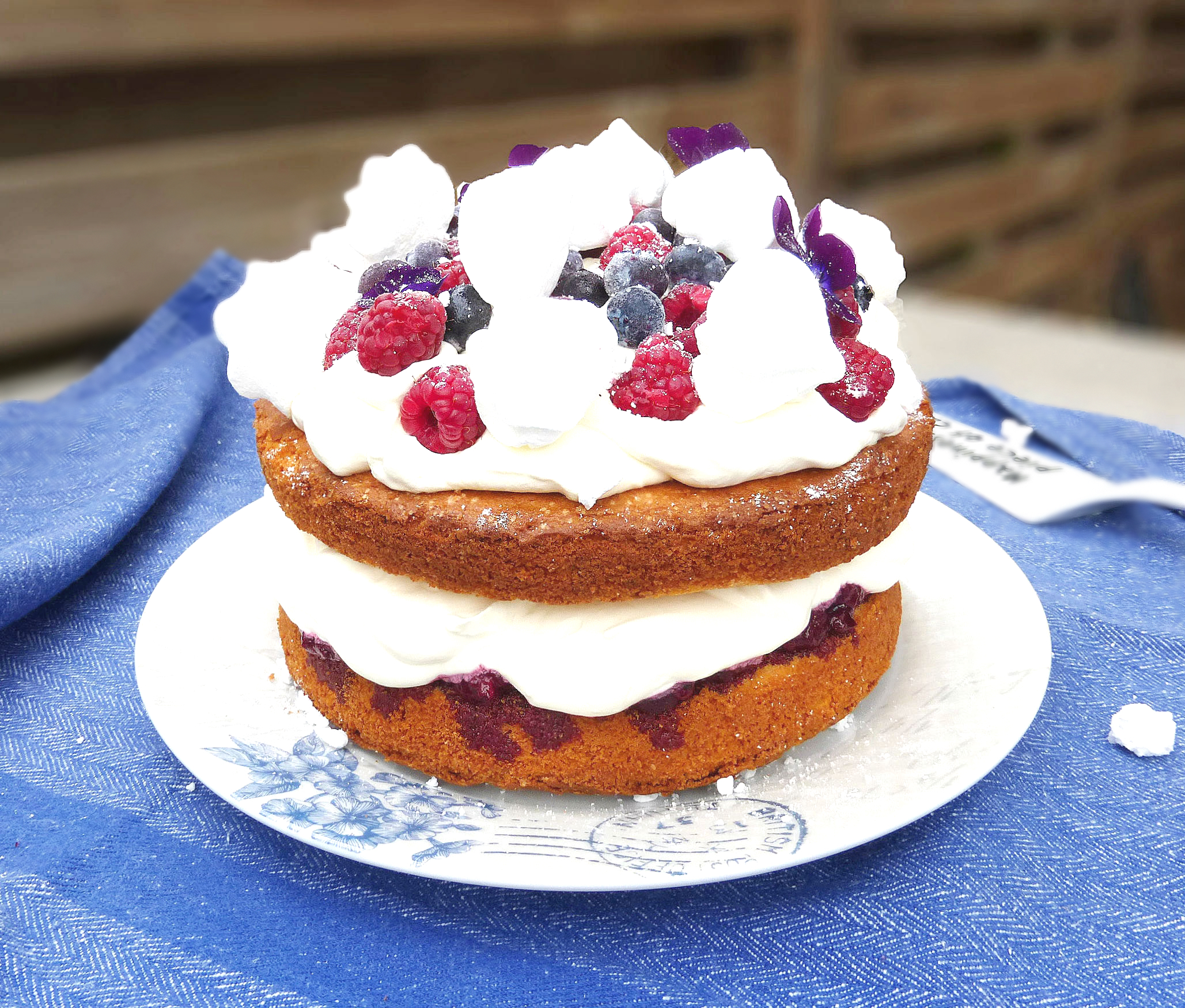
Some of the links in this post could be affiliate links. Please read my disclosure and privacy policy for more information.
_________
This glorious dessert (because let’s be clear here, this is way more than just a cake) was created to take to an afternoon tea party I attended. It was a gathering of British expats and we wanted to enjoy some of our favourite British bakes.
Jump to: |
| A dessert perfect for afternoon tea |
| What’s Eton Mess? |
| Combining the best of both recipes |
| Adaptions for this dessert |
| Recipe for Eton Mess cake |
A dessert perfect for afternoon tea
Afternoon tea is still quite a thing in the UK. Many people (more often than not ladies, but I am trying to be inclusive here) spend a few wonderful hours in little teashops. Here, they enjoy finger food such as dainty cucumber sandwiches (without crusts, of course), scones, shortbread, and delicate cakes like mini berry bundts.
The star of the show is often a slice of Victoria sandwich cake. The pride of British baking, still as popular as it was during the reign of Queen Victoria. I decided that I wanted to pull out all the stops a little and came up with this combination of Victoria sponge and Eton Mess.
What’s Eton Mess?
Another classic traditional British dessert with its place fully alongside a Victoria sponge, Eton Mess is a super simple summer dessert. First documented in the late 19th century, Eton Mess consists of loads of cream, fresh summer berries and meringue. It’s delicious and very quick to prepare, making it the perfect dessert for warm days.
I have my own, less traditional version of Eton Mess made with Greek yoghurt and homemade maple syrup meringues. Just as tasty, but a little healthier.
Combining the best of both recipes
This cake is filled with rich whipped cream. Although Victoria sponge cake is often filled with buttercream these days, whipped cream would have been a more common occurrence a century ago. A Victoria sandwich doesn’t have frosting, and has nothing more than a light flurry of powdered sugar on top. This cake, however, has yet more cream. As if stuffing it in the middle of the two cakes wasn’t enough. I’ve got to say that I prefer the cream. Buttercream can be a little cloying, so using cream definitely gives this dessert a lighter, summery feel. Berry jam is used as part of the traditional cake filling, and it also sandwiches these two cakes together.
Adaptions for this dessert
Life is all about changing things up to suit us. You can take a recipe like this and change it untold ways, such as:
- You can use all-purpose flour (or even a gluten free blend) to make this cake. Spelt is so awesome in cakes, but if you don’t have that at hand, use any flour you like
- Use mixed berries instead of (or as well) as the jam in the filling
- Use a light cream cheese filling and skip the jam altogether
- Make a one layer cake and top it with cream and berries
- Double the ingredients and make a whopping three or four layer extravaganza
Eton Mess Sponge Cake
Ingredients
Sponge cakes:
- 225g (1 cup + 1 tbsp) sugar
- 225g (1 cup) butter (softened)
- 4 eggs (medium - room temperature)
- 225g (1 cups + ¼ cup + 2 tbsp) spelt flour (see note 1)
- 2 tsp baking powder
Filling / topping:
- 500ml (2 cups) whipping cream (see note 2)
- jam (see note 3)
- assorted fresh berries
- mini meringues (or pieces of meringue)
Instructions
Sponge cakes:
- Pre-heat the oven to 180°C (350°F).
- Grease and line two 24cm (8 inch) round cake tins.
- Beat the butter and sugar together until light and fluffy (I used my stand mixer, but you can do it by hand).
- Add the eggs, one at a time, beating each one in before adding the next.
- Sift the flour and baking powder together and then gradually add to the wet ingredients (I just kept my stand mixer running on the lowest speed).
- Stop mixing when the flour is just incorporated (you may see a little flour that hasn't been mixed in, and that's okay).
- Split the batter evenly between the two pans.
- Bake for around 20-25 minutes (in the lower part of the oven), until the tops feel "bouncy" to the touch and an inserted skewer comes out clean.
- Leave the cakes to cool in their pans for around ten minutes before turning out onto a wire rack. Let them cool completely before decorating.
Filling:
- Whip the cream until stiff peaks form.
Assembly
- Turn one of the cakes over so that the top is underneath.
- Spread jam over the bottom of one cake.
- Then, spread half of the whipped cream over the top.
- Place the other cake on top (bottom side down) and spread over the remaining cream.
- Decorate with fresh berries and mini meringues. You can crush up one or two of the meringues and sprinkle the bits all over. Add any other decorations you like (I put a couple of flowers on for the prettiness factor).
- Finish off with a sprinkling of icing (powdered) sugar if you fancy it. Enjoy!
Notes
- You can use spelt or regular flour for this recipe (just use the same amount).
- The cream I used has a fat content of 36%. In Sweden, it is referred to as whipping cream, but called heavy whipping cream, or heavy cream, in North America.
- I haven't included any measurements for jam. Just use as much or as little as you like (and it doesn't matter what kind you use).

